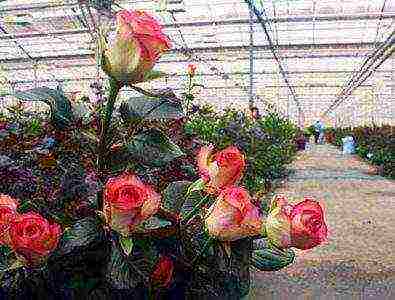Content
With the development of the private sector, more and more people are trying to somehow embellish the area near their home. Many, of course, do not pay enough attention to this, not trying to stand out among their neighbors. But there is also a group of the population that believes that a well-decorated lawn is a reason to be proud of yourself and the territory that surrounds them. In this regard, the question arises: what is the best lawn grass?
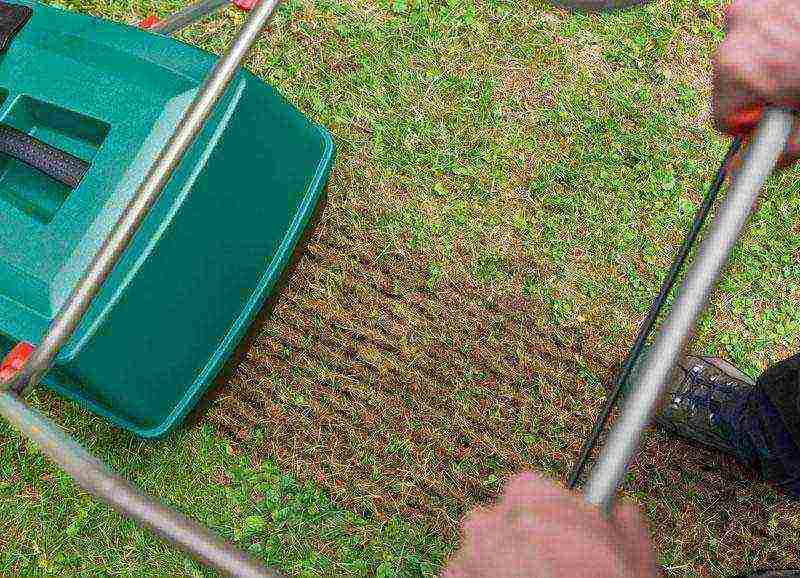
When sowing the lawn before the first mowing, it is recommended to use a mechanical seeder.
The answer to this question is not so simple. After all, the grass is different to the grass, and where one species can grow, the other will never take root. What grass is the best for this or that lawn, let's try to figure it out in this article.
What is the best grass type for a parterre lawn?
A parterre lawn is a decorative lawn in the front part of the plot. For this option, the best choice is grass varieties that grow well tillering and are relatively short. Red fescue and meadow bluegrass work best.
Red fescue
This variety is best suited for parterre lawns. This plant is a winter type cereal. Its roots grow shallowly into the ground and form a good sod.
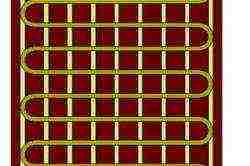
Lawn sowing scheme.
The main stems reach a length of 70-100 cm, depending on growing conditions. Grows especially well in fertile loamy soils. Its distinctive feature is increased moisture and frost resistance. The grass tolerates frost well and can grow even in excessively moist soil.
The question is pertinent: how long will it take for the lawn to bloom if it is planted with just such a grass? In the first and second years after sowing, one should not expect that this variety will begin to grow actively. This process begins only by the third year of the herb's life.
In addition to this variety, there is also such a grass as meadow bluegrass, which is also well suited for a parterre lawn.
Meadow bluegrass
This herb is a winter cereal. Today, there are more than a dozen of its varieties. They vary in height and width of leaves.
Such a plant is well suited for this type of lawn. It forms an excellent sod that is very difficult to break with your hands. It grows about 30-60 cm in height. The leaves are wide, shiny below. These advantages make it possible to use meadow bluegrass as lawn grass.
The plant grows well on loamy fertile soils.
It tolerates moisture and frost well, as it is a winter cereal.
If we talk about how much this grass grows, then in the first year it develops very slowly and you can not expect a gorgeous lawn. The very peak of development and growth is the second and third years of flowering. A mature herb will be pleasing to the eye for about 20-25 years from the time of maturation.
Back to the table of contents
What is suitable for an ordinary park lawn? 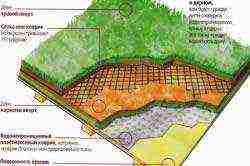
Lawn laying scheme.
Such lawns are characterized by a large crowd of people. Therefore, more stringent requirements are imposed on them. Not all types of herbs are suitable for them.
Basically, it is not advisable to plant a particular variety, it is better to use grass mixtures that help to achieve the desired effect. Along with the options already listed, other varieties are used. For example, white and common bent, sheep fescue, bluegrass and others.
It is worth considering in more detail exactly the white bent, because it is she who is mainly used in most grass mixtures for lawns.
White field bale
It is a perennial low grain. Its appearance largely depends on where it grows, in what environmental conditions. The root system of the plant is well-branched and perfectly and densely penetrates the topsoil. The stems of this herb reach a height of 80-120 cm.
This variety grows best on loamy and sandy loam fertile soils. Withstands cold snaps and trampling well, but is whimsical about the heat. Now you can tell a little about how much the variety grows.
In the first year of flowering, the grass develops very quickly. In the second year, it already begins to bush. The variety is worth about 8-10 years. This is a relatively good time to use this grass to form a lawn.
Grass mixtures for a park lawn can be very diverse.

The scheme of mechanical seeding of the lawn.
The most common is a mixture that contains the following seeds: white bent (30%), sheep fescue (20%), bluegrass (20%), perennial ryegrass (30%). Of course, this is not the only option, there are many others, but this is the most popular and widely used one.
What is best for a meadow lawn
Even more stringent requirements are imposed on the park lawn in terms of durability, durability and beauty. Basically, it is characterized by the presence of bluegrass.
This plant is one of the most unpretentious and frost-resistant, so this is the best option for this type of lawn. Bluegrass tolerates high humidity and is practically unpretentious to weather conditions.
Back to the table of contents
The best options for playing and sports turf
These types of lawns are characterized by the presence of not only stubborn grass, but also good drainage to drain excess water. The following grasses are used: meadow bluegrass, red fescue and perennial ryegrass. The last option is worth talking in more detail.
Pasture ryegrass
Perennial ryegrass is a perennial undersized cereal. Its height reaches 50-60 cm. It grows well on loamy soils of medium humidity. Poorly tolerates snowless winters and late frosts.
It should be regularly fed with fertilizers. This leads to the fact that the variety begins to develop rapidly.
Thus, we can summarize some of the above. The most important thing that became clear from the article is that not all grasses are equally suitable for a particular type of lawn. What is good for an ordinary home parterre turns out to be detrimental to sports or meadow.
It has also been shown that mainly grass of the same type is used to form lawns, which, when planted, form a strong turf. This is what the lawn basically cannot exist without.
- The best were the varieties of lawn grasses, which have a winter appearance. After all, they persist not only in summer, but also in winter. This is very important for our latitudes, because our summer is almost equal in length to winter.
- Another important factor when choosing is the tolerance of different soils. If we talk about the central part of Russia, then loamy soils of average fertility predominate here, therefore, when choosing, it is worthwhile to focus on ensuring that the variety is suitable for specific conditions.
- Another factor to consider when choosing lawn vegetation is the growth duration of the variety. Many of the herbs return to their normal form only after a certain period of time.
It may take not a month or two, but several years. Sometimes there is no time to wait so long, so it is better to select actively growing options.
Do not forget about grass mixtures when planting a lawn. They are very effective when it comes to trampling. The characteristics of the various species seem to complement each other.
At the same time, the disadvantages are smoothed out. This is very effective and is now being actively implemented and applied.
Do not forget that some crops require feeding.This stimulates their growth and development, and this is very important for the early formation of the lawn.
Of course, now you can grow a lawn not only from seeds, but also purchase a ready-made one. After all, the sod of the listed varieties does not break. This makes transportation very easy and convenient. But it's always better to do something with your own hands.
It is no secret that a beautiful well-groomed lawn can give even the most modest site a luxurious look. The green cover will become not only a wonderful backdrop for fragrant flower beds, but also the true pride of its owner. After all, it is difficult to look away from a neat carpet, if you take care of it regularly.
But in addition to the aesthetic benefits, the lawn also brings practical benefits. Grass is a valuable source of oxygen, it absorbs dust, soot and exhaust fumes, leaving the space clean and fresh. The velvety lawn in summer softens the heat of the dazzling sun, muffles extraneous noises and is the best suited for organizing fun picnics and children's games in nature.
However, in order to enjoy the emerald splendor, you need to work hard. We'll have to figure out what types of lawns exist, find out about the types of lawn grass, planting and maintenance features.
Varieties of lawns
Distinguish between decorative and special purpose lawns. The former will allow you to create an original landscape design, the latter - a convenient playground for sports and children's fun.
Decorative lawns require close attention and care, as a result, you get not only moral satisfaction from contemplating a magnificent composition, but also a tempting opportunity to equip a fabulous oasis where harmony reigns.
Sports lawns are characterized by high resistance to intense loads, which means they are optimal for incendiary parties and friendly competitions in football, badminton and even field hockey.

Of course, the prospect of becoming the owner of a tennis court looks quite tempting, but the aesthetic aspect worries a modern person much more. That is why decorative lawns are in steady demand. Moreover, there are many varieties of such.
- The lawn is parterre. Extraordinarily effective. A flat meadow looks best along long alleys, around flower beds and at the main entrance. It should be noted that undersized grass requires proper care. It is not recommended to walk on it, and therefore the parterre lawn can act exclusively as an impressive decorative element. Approximate composition: red fescue (30%), red fescue (20%), meadow bluegrass (20%);
- The lawn is Moorish. Smart and unconventional. Consists of a mixture (more than 10 species) of flowering summer plants, the height of which does not exceed 50 cm. The lawn is unpretentious in maintenance, it can be renewed only once a year. One of the main conditions is timely watering. The composition includes meadow timothy, bluegrass, red fescue, ryegrass;
- Roll lawn. A profitable solution for impatient summer residents who do not want to work and want to get the result right now. Easy to transport, because rolled up. It remains to spread it, tamp it, moisten it and in the evening you can admire the picturesque lawn in front of the house. The lawn is easy to care for and resistant to power loads;
- Artificial lawn. Long lasting and fun. It is not afraid of cold weather and pleases with bright colors at any time of the year. You can lay it both in spring and autumn;
- Meadow lawn. Ideal for all types of landscaping and large-scale planting. Any garden flowers can be planted on it. The backlight will allow the grass to withstand the winter cold. Sample composition: meadow bluegrass, perennial ryegrass, meadow timothy, white and red clover, flower mix.
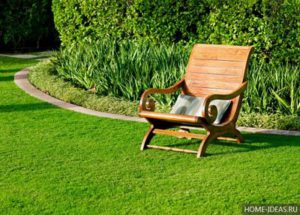 A good lawn: what is it like?
A good lawn: what is it like?
The grass, regardless of which lawn you decide to break, must meet some requirements. The defining characteristics are as follows:
- immunity to diseases and freezing;
- the ability to effectively control weeds;
- good "responsiveness" to mineral fertilizers;
- slow growth after bevel;
- the fastest possible rooting;
- powerful branched roots;
- the ability to grow on poor soils;
- vegetative reproduction;
- preservation of juicy color after mowing.
Lawn grasses: classification
If you are seriously thinking about how to decorate the local area, then remembering some facts from the school botany course will not hurt. So, herbs are annual, biennial and perennial.
- Annuals (bluegrass, ryegrass). They live only one year. After which the underground and terrestrial organs cease to function and the plant dies;
- Biennial (hop alfalfa, multi-flowered ryegrass). In the first stage of life, only vegetative organs are formed, while the shoots that give seeds, flowers and fruits - in the second phase of development
- Perennial... They do not die after the seeds ripen, but form buds that give new fruiting shoots.
By the height of shoot growth, lawn grasses are presented in several tiers.
First tier (upper) form light-loving plants. Thick stems reach a height of 100 cm and more. Vivid representatives of this class are creeping wheatgrass, vicoliate sainfoin, narrow-headed wheatgrass, awnless bonfire.
Second tier (lower) represent grasses with slender stems reaching a height of 55-70 cm. After mowing, they bush strongly, forming a dense, squat carpet. This category includes red fescue, meadow bluegrass, boulders, horned fescue, white clover.
The middle link (third tier) is given semi-top grasses reaching a height of 50-100 cm. Pasture ryegrass, hybrid clover, meadow fescue, yellow alfalfa, meadow timothy and other semi-upper. They are attractive because they bush well after a haircut.
An important characteristic of perennial grasses is their lifespan. The most tenacious are those that develop slowly from the first shoots to full bloom (red fescue, bent grass, meadow bluegrass). The comb-grass, rootless wheatgrass, pasture wheatgrass and multicolored ryegrass develop faster.
An equally important sign is the development of the root system. This criterion divides lawn grasses into:
- Rhizome (bluegrass, some types of red fescue, meadow foxtail, white bent). The root process is located close to the surface of the earth. Underground shoots form several nodes at once. The rapid growth of rhizomes contributes to the rapid formation of new stems and the preservation of herbage for many years;
- Loose shrubs (many types of ryegrass, meadow fescue, rootless wheatgrass, comb). The root also lies at the surface of the earth. They form only one tillering node, but the sprawling above-ground bush gives many shoots;
- Rhizome-friable (bent grass, meadow bluegrass, red fescue). They form not only long, but also short roots. Thanks to this, uniform and dense settlement of the soil is ensured. These grasses fully meet the requirements for high-quality lawn coverage;
- Dense bush (white fescue, sheep and furrowed fescue, red fescue). The tillering node is located above the ground. Sprouted new shoots grow tightly to old ones. When growing, these grasses form hard bumps, therefore, when sowing lawns, they are used with caution;
- Pin-root (horned lily, blue alfalfa white and red clover, sainfoin). The dominant shoot is located near the earth's surface. Young shoots develop on the taproot, which grows stronger and thicker over time, penetrating deeper into the soil.Plants form a lush bush that looks attractive and does not require any special maintenance.
If you want to sow parterre lawn, then give preference to long-term, grass-roots, rhizome and rhizome-loose cereals. For the arrangement of sports and play tracks, grassroots, some types of riding, loose and rhizome grasses are more suitable.
More information can be found in our article: Classification, types and characteristics of lawn grasses and mixtures
Monoculture or seed mixture: which is better?
What types of lawn grass will help create a smooth and beautiful lawn - this is the question that worries those who dream of a green carpet in front of the house. For a high-quality parterre lawn, monoculture crops are most often used. If you bought a mixture, then it should include varieties of the same color and texture.
By and large, clean crops are quite suitable for the formation of other types of lawns. It is only important to create conditions suitable for this or that cereal. However, many landowners rely on mixes for landscaping. There are several reasons for this. Some are worried about the lack of favorable conditions for planting (a lot of shade, heavy soil, acidic soil), others doubt whether the chosen monoculture is suitable for the climate of the region. There are frequent cases when the cause of the death of the entire lawn is any weather or soil factor.
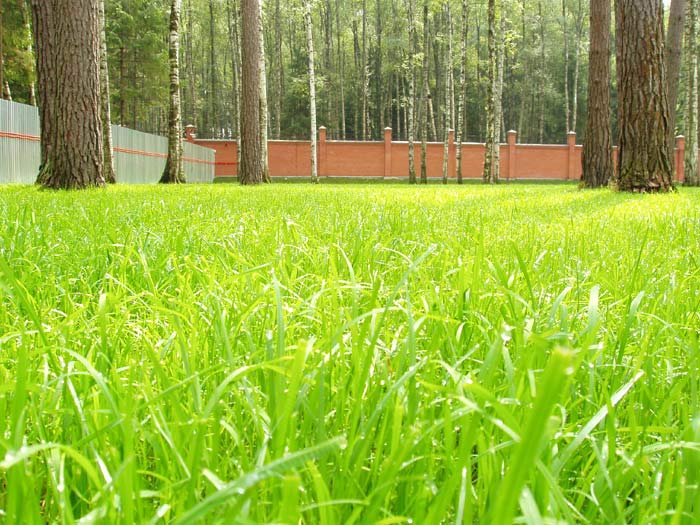
Herbal mixtures will help to avoid this. The composition can be varied, but usually the "herbal cocktail" includes meadow bluegrass, red and sheep fescue, bent grass, creeping clover, perennial ryegrass. They are distinguished by a low growth rate, are unpretentious, remarkably resist weeds and pathogens of various diseases, are winter-hardy and drought-resistant. Let's get to know them better.
Characteristics of cereals
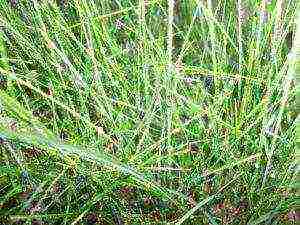 Red fescue (Festuca rubra)
Red fescue (Festuca rubra)
Perennial rhizome-loose plant with narrow dark leaves. The first shoots appear a week after sowing. The tillering phase begins in 2-3 weeks. Able to displace weeds from the grass stand. One of the main advantages is the preservation of bright greenery even during periods of prolonged drought. Smoke and gas resistant. Fescue grows rapidly and forms a cover of excellent quality in the first year of life. Suitable for growing in the shade.
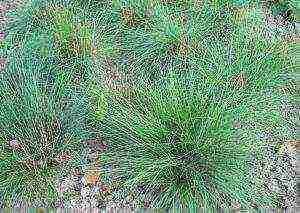 Sheep fescue (Festuca ovina)
Sheep fescue (Festuca ovina)
Lawn grass, characterized by thin, tough leaves of a green-gray tint. Impervious to trampling and dry periods. Long regrowth time eliminates the need for frequent mowing. However, the bush structure rarely forms a good cover in the first year. The plant does not fight weeds well - when sowing, special attention should be paid to checking the soil. At low sowing rates, the area is bumpy. Good in tandem with red fescue.
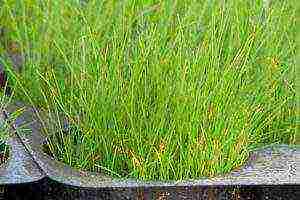 Red bent (Agrostis stolonifera)
Red bent (Agrostis stolonifera)
Perennial korotkokornevischnaya grass, developing long shoots above the ground. The first shoots can be seen already on the 5th day after sowing, active growth occurs on the 8th day. The foliage is light green. It is characterized by a high intensity of tillering and forms a dense lawn in the first phase of life. Requires abundant moisture. Shade tolerates well. The disadvantages include the inability to grow on heavy soils - the shoots take root and form furrows that quickly turn yellow and are easily damaged when cutting.
 White bent (Agrostis alba)
White bent (Agrostis alba)
A perennial loose shrub plant. A powerful root system densely fills the soil. Stems reach a length of 110 cm. Leaves are gray-green, with a rough surface, flat. Loves moisture, grows quickly on sandy and loamy soils. It is frost-resistant, but it does not endure drought very well. Patient with trampling and low mowing. In the first year of life, it is not suppressed by weeds and is actively developing. From the second or third year it grows even more.Keeps in herbage for up to 10 years.
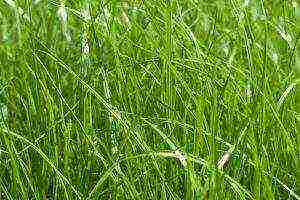 Meadow bluegrass (Poa pratensis)
Meadow bluegrass (Poa pratensis)
Perennial rhizome loose shrub with bright leaves. The sprouting stage is slightly delayed - the first shoots appear 2 weeks after sowing. Tillering occurs in a month. Dry weather does not tolerate well. This is manifested in the yellowing of part of the shoots. The grass forms an even, firm and strong coating of intense color. Grows well on saline and acidic soils.
 Perennial ryegrass (Loliun perenne)
Perennial ryegrass (Loliun perenne)
Perennial loose shrub lawn grass. Attracts with dark green color and shine of leaves. The first shoots appear on the 5th day, large-scale greening - on the 7th. The most intensive development occurs in the first year of life. Fights weeds easily. A dense, aesthetically pleasing surface requires frequent bevels. It is not suitable for arranging a long-term lawn, it is optimal for temporary parterres.
 Creeping clover (Trifolium repens)
Creeping clover (Trifolium repens)
Low-density dense plant with multiple leaves. Drought-resistant, in spring it begins to grow earlier than its counterparts. The length of the stems is 45-50 cm. The clover is durable, perfectly tolerates low mowing and trampling, undemanding to the soil. In arid regions, it is considered a valuable component in mixtures for grassland and turf coverings.
Which seeds should you choose?
As you can see, the types of lawn grass are diverse, therefore, when choosing, doubts naturally arise - what to prefer? First of all, it is necessary to take into account the peculiarities of the terrain. For example, in wet areas, a giant bent grass takes root, in coastal areas - sandy wheatgrass, on poor soils - sheep fescue, in the shade - forest bluegrass.
Before heading to the store, think about what you want to end up with?
- A bright thick carpet for lawns and sports training will help to create mixtures, which include fine bent grass, perennial ryegrass, red fescue;
- The "assortment" for heavily shaded areas should include bluegrass and bent grass;
- Meadow bluegrass and fescue will help in arranging a playground for games and sports (the height of the lawn is not more than 4 cm);
- For creating decorative glades with a grass height of up to 3 cm, red fescue seeds are good;
- For sowing walking paths, you can use a mixture of timothy grass, awnless rump, reed fescue, meadow bluegrass;
- For the restoration of a slightly bald lawn, ryegrass is good, forming an excellent sod;
Carefully read the information on the label, which should indicate the composition of the mixture, seeding rate, date of manufacture, address of the manufacturer. The quality of products must be confirmed by both an international certificate of conformity and a certificate of the country of origin.
Look for data on the adaptation of the mixture to your climate - otherwise disappointment cannot be avoided.
The seeds must correspond to the purpose and type of lawn, you should also take into account the level of groundwater, the degree of illumination and the quality of the soil in your suburban area.
How many seeds do you need?
To determine the required number of seeds, you should know the seeding rate (the minimum amount of seed material that can ensure the tinning (overgrowing) of the territory). This indicator depends on a number of factors: weather, soil, target (type of lawn), as well as on the biological characteristics of the cereal.
In order not to confuse summer residents with additional calculations, scientists have derived an approximate seeding rate for all herbs - 5 kg per hundred square meters or 50 grams. per m2. This is subject to the use of a seeder. With manual seeding, the amount of raw materials is increased by 10%.
A few important tips
Now you know not only what types of lawn grass exist, and which one to prefer in a given situation, but also how many seeds are needed for sowing. And finally, a few more tips from experts:
- The best time for sowing is April-May;
- Preliminary soil preparation involves chemical and mechanical processing;
- The oak grass bluegrass, which grows well in the shade, will save from the pale color of the lawn. If drainage is not organized on wet soils, then choose mixtures with marsh bluegrass, which forms a powerful root system and does not require frequent sowing;
- Pole grass will be a real godsend for those who want to create a velvet lawn. It will look simply stunning, but the lifespan of such a "fabric" is no more than 5 years;
- Meadow fescue is a growth champion, so if you don't want to wait long for the first shoots, be sure to include this plant in the mixture;
- Annual bluegrass, perennial ryegrass, turfy pike are not quite suitable for the Russian climate;
- To improve the quality of the soil, peat and river sand are introduced into it. Good humus for fertilization, rotted compost, vermicompost;
- It is necessary to sow in the direction from the sown areas to the non-sown areas. Then carefully "comb" the soil with a rake and sprinkle the seeds with soil;
- In the first few days, water the seeds vigorously, otherwise they will dry out;
- To prevent the young lawn from dying in the first winter, after the last mowing, mulch it with vermicompost.
Valuable information has been received, which means that you can safely go in search of seeds for the most beautiful lawn. A little patience and very soon you will be able to admire the spectacular decoration of the landscape - a lush carpet, "woven" with your own hands.
Video instruction for sowing lawn grass
There is a lot of trouble with your lawn: does the grass look not as decorative as on the package with seeds, does it freeze in places, turn yellow, thin out and overgrow with weeds? Perhaps you have chosen the wrong varieties for our climatic conditions. Which lawn grass is best for you, and which varieties are better to choose, we will tell you today.
Lawn seed selection rules
The grass on the lawn should be perennial, frost-resistant, and fast growing. These are important conditions for an ideal lawn, but not the most important ones. We list the main factors of buying seeds for sowing on the lawn, which are better to choose in the store:
- Adaptation to specific climate conditions;
- Good development of the root system;
- Saturation of greenery and uniformity of seedlings;
- Ability for vegetative reproduction;
- Good cut tolerance.
Do not neglect the general rules for choosing lawn grass: the shelf life of the material, pretreatment of seeds, manufacturer's guarantees, etc.
Small video footage about lawn grass
Types of grasses and lawn mixtures
For the lawn, it is best to use cereals. They have a good root system, produce uniform green shoots, help remove weeds and have an excellent decorative appearance after cutting. Most often, such grasses are sown as meadow bluegrass, bent grass, ryegrass, fescue and others. Various grass mixtures are also popular.

Ryegrass belongs to the elite herb varieties. It looks very beautiful in any place free from landings. This variety is sensitive to watering and loves mineral fertilizing.
Interesting to read: Self-planting of lawn grass on the site
Herbal mixtures
- Versatile blend... The herbs in this mixture are fast germinating, resistant to external conditions, remove weeds and are inexpensive. The only negative is that such a lawn requires frequent mowing.
- Sports varieties... It is a type of cereal mixture for playgrounds, stadiums and outdoor activities.
- Climate-specific mixtures... It is important to choose varieties of grass for the lawn not only in appearance, but also in climatic characteristics. There are special mixtures for areas that are under the scorching sun. If you want to sow shady places, you should pay attention to shade-tolerant grasses.
- Mixtures of flowers and herbs... Such compositions are sown to create a meadow-type lawn.You can choose ready-made herb mixes or mix flowers and cereals that can bloom all summer in succession. Low-growing greenery is suitable for a neat, bright meadow lawn, and you can decorate a country-style plot with tall grasses and flowers.
- Elite lawn composition... Although a mixture of elite herbs is capricious and sensitive to external conditions, its appearance justifies all means. Such grasses look very decorative and can decorate any places free from planting.
The best varieties of lawn grasses for the Russian climate
1. Meadow bluegrass. This perennial variety is one of the earliest cereals. In its pure form, it is practically not sown, since the roots of this herb slowly take root. Bluegrass is an excellent base for a grass mixture. It produces soft and juicy greens, displaces weeds and grows well with other grains.

